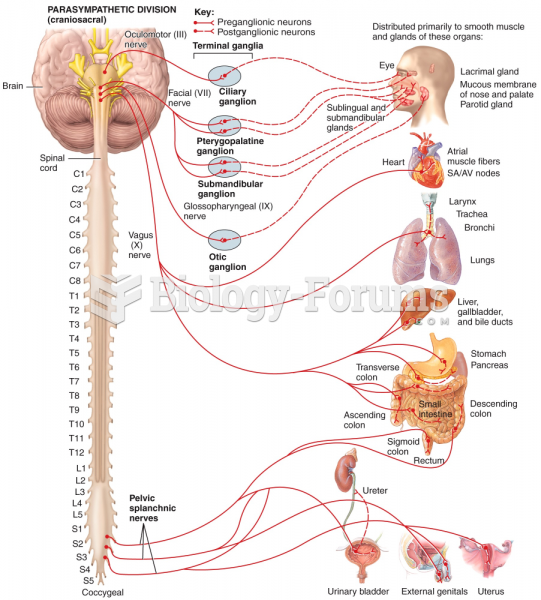|
|
|
By definition, when a medication is administered intravenously, its bioavailability is 100%.
Blood is approximately twice as thick as water because of the cells and other components found in it.
Autoimmune diseases occur when the immune system destroys its own healthy tissues. When this occurs, white blood cells cannot distinguish between pathogens and normal cells.
There can actually be a 25-hour time difference between certain locations in the world. The International Date Line passes between the islands of Samoa and American Samoa. It is not a straight line, but "zig-zags" around various island chains. Therefore, Samoa and nearby islands have one date, while American Samoa and nearby islands are one day behind. Daylight saving time is used in some islands, but not in others—further shifting the hours out of sync with natural time.
Between 1999 and 2012, American adults with high total cholesterol decreased from 18.3% to 12.9%







